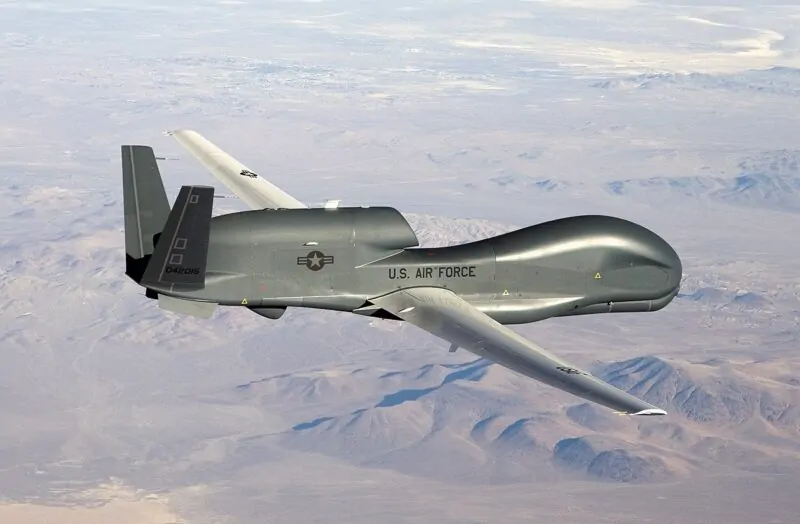When it comes to military technology, drones have revolutionized modern warfare, intelligence gathering, and surveillance tactics.
These sophisticated machines are designed to operate in some of the most challenging environments, carrying out missions that demand both precision and endurance.
A critical aspect of their functionality, and often a key to their strategic advantage, is their maximum altitude capability.
The altitude that a military drone can reach directly impacts its effectiveness, as higher altitudes allow for enhanced reconnaissance, reduced detection risk, and extended reach over vast areas.
To help you grasp what needs to be known about each military drone in the US army, we will discuss the altitude capabilities.
Table of Contents
ToggleAltitude Capabilities of Each Military Drone Model
| Drone Model | Maximum Altitude | Flight Time | Purpose | Manufacturer |
|---|---|---|---|---|
| MQ-4C Triton | 56,000 feet | 30 hours | Surveillance/Patrol | Northrop Grumman |
| MQ-9 Reaper | 50,000 feet | 27 hours | Combat/Surveillance | General Atomics |
| RQ-4 Global Hawk | 60,000 feet | 32 hours | Reconnaissance | Northrop Grumman |
| MQ-20 Avenger | 50,000 feet | 20 hours | Combat | General Atomics |
| RQ-170 Sentinel | 50,000 feet | 5-6 hours | Intelligence | Lockheed Martin |
| Skydio X2D | 8,000 feet | 35 minutes per battery | Short Range Reconnaissance | Skydio |
| B-21 Raider | >18,000 feet | Classified | Strategic Bomber | Northrop Grumman |
| RQ-180 | >18,000 feet | Classified | Long Range Reconnaissance | Northrop Grumman |
| X-47B | 40,000 feet | 2 hours | Combat Demonstration | Northrop Grumman |
Military drones’ endurance varies based on their design and power systems. Fixed-wing drones can stay airborne for 12 to 48 hours while rotary-wing drones typically operate for 1-2 hours before needing refueling or recharging.
Advanced battery and hybrid power technologies continue to extend these durations. However different models have different endurance levels.
Different drones are engineered with unique altitude limits tailored to specific mission requirements, ranging from high-altitude intelligence gathering to low-altitude precision strikes.
These altitude capabilities determine how effectively a drone can gather data, remain undetected, and maintain a line of communication.
MQ-4C Triton
- Primary Function: Persistent Maritime Intelligence, Surveillance, and Reconnaissance (ISR)
- Propulsion: Rolls-Royce AE3007H engine
- Dimensions:
- Length: 47.6 feet (14.5 meters)
- Wingspan: 130.9 feet (39.9 meters)
- Height: 15.4 feet (4.7 meters)
- Weight: Maximum design gross take-off weight of 32,250 pounds (14,628.4 kilograms)
The MQ-4C Triton is designed for high-altitude surveillance and patrol missions, primarily for the U.S. Navy.
It has a maximum altitude of 50,000 feet, enabling it to cover large maritime areas and provide real-time intelligence and reconnaissance.
As part of the Navy’s Maritime Patrol and Reconnaissance Force (MPRF) Family of Systems, the MQ-4C contributes significantly to achieving persistent, large-scale maritime domain awareness.
Its operational role aligns closely with the objectives of providing advanced surveillance capabilities across extensive maritime territories, underpinning the Navy’s commitment to maintaining a strong and adaptive ISR network in increasingly complex environments.
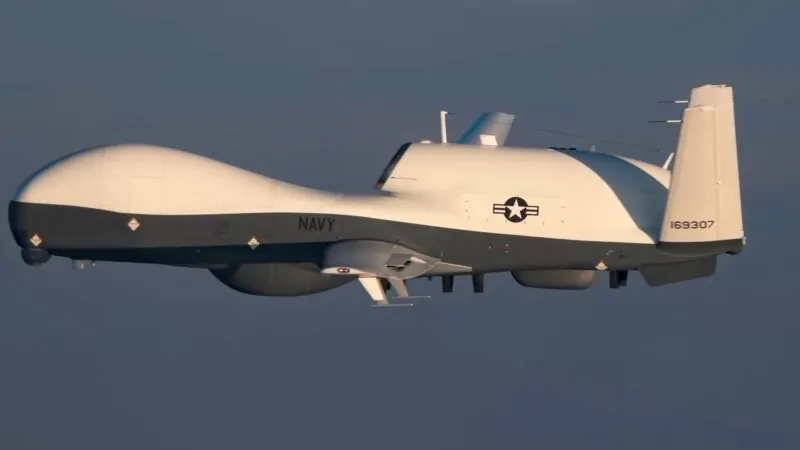
MQ-9 Reaper
- Powerplant: Honeywell TPE331-10
- Max Gross Takeoff Weight: 10,500 lb (4763 kg)
- Fuel Capacity: 3,900 pounds (1769 kg)
- Payload Capacity: 850 pounds internal (386 kg); 3,000 pounds external (1361 kg)
- Power: 11.0 kW/45.0 kVA (Block 5)
- Dimensions:
- Wingspan: 66 feet (20 meters)
- Length: 36 feet (11 meters)
The MQ-9 Reaper serves in both combat and surveillance roles. With a maximum altitude of 50,000 feet, it is used by the U.S. Air Force and other military forces for targeted strikes and intelligence missions, benefiting from its ability to operate at high altitudes and stay airborne for extended periods.
MQ-9 is a military drone known for its advanced autonomous features. It can operate at high altitudes and extended ranges, making it versatile for strategic missions.
It is equipped with advanced payload options like EO/IR sensors and radar systems, ensuring adaptability across various mission needs.
The Reaper’s design emphasizes redundancy, with triple-redundant systems for enhanced reliability and a modular framework to accommodate different mission payloads, effectively supporting the Marine Corps in both offensive and defensive operations across global terrains.
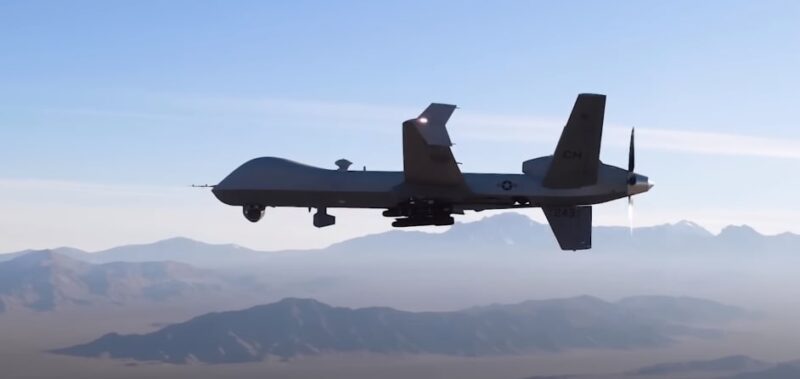
RQ-4 Global Hawk
- Contractors: Northrop Grumman, Raytheon, L3Harris
- Operator: Air Combat Command (ACC), Air Force Materiel Command (AFMC)
- Dimensions:
- Wingspan: 130.9 ft
- Length: 47.6 ft
- Height: 15.3 ft
- Weight: Maximum takeoff 32,250 lb; Maximum payload 3,000 lb
- Powerplant: Rolls-Royce F137-RR-100 turbofan (7,600 lb thrust)
- Performance: Speed 356.5 mph, Range 14,150 miles, Endurance 32+ hrs, Ceiling 60,000 ft
The RQ-4 Global Hawk, a highly efficient military drone, is a high-altitude, long-endurance unmanned aerial vehicle used for reconnaissance.
Its maximum operational ceiling of 60,000 feet allows it to conduct extensive surveillance operations, gathering vital intelligence over large areas without detection.
First introduced in combat in 2001, it has since evolved through several blocks, each designed for specialized roles such as the EQ-4B for communications relay and the Block 40 for advanced ground and cruise missile surveillance using AESA radar.
With a robust range and prolonged endurance capabilities, the Global Hawk supports critical ISR tasks traditionally held by manned platforms, enhancing U.S. and allied situational awareness in multiple global locations.
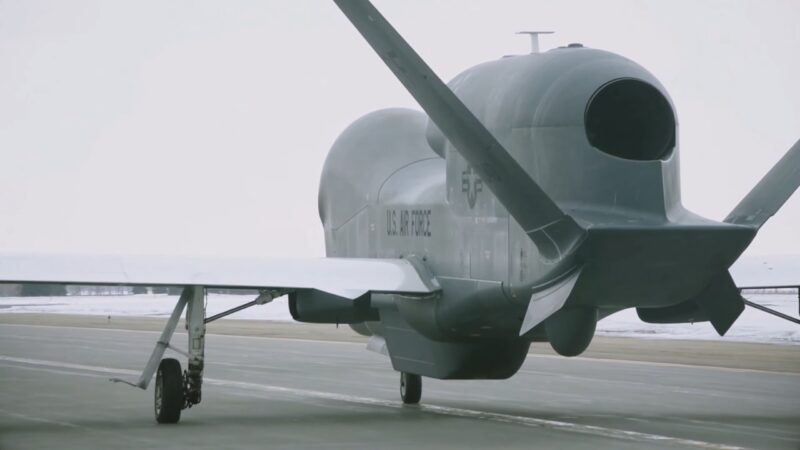
MQ-20 Avenger
- Propulsion: 1 Pratt & Whitney PW545B turbofan with 17.8 kN (4,000 lb) thrust
- Maximum Weight: 8,255 kg (18,200 lb)
- Maximum Speed: 740 km/h (460 mph)
- Ceiling: Over 15,240 m (50,000 ft)
- Dimensions:
- Length: 13 m (44 ft)
- Wingspan: 20 m (66 ft)
- Endurance: 20 hours
The MQ-20 Avenger is a combat-focused UAV with a maximum altitude of 50,000 feet. It provides a strategic advantage in military operations by offering high-altitude capabilities for both surveillance and precision strikes.
Operated with the same ground control system as its predecessor, the MQ-9 Reaper, the Avenger supports various sensor payloads, including advanced imaging systems and radar for precision targeting.
First flown in 2009, this jet-powered UAV has since been used by General Atomics and the U.S. Air Force in numerous test scenarios, including AI-driven autonomous missions and integration of new payloads.
While it was initially considered as a Reaper successor under the MQ-X program, the Air Force concluded that its benefits didn’t justify its acquisition costs.
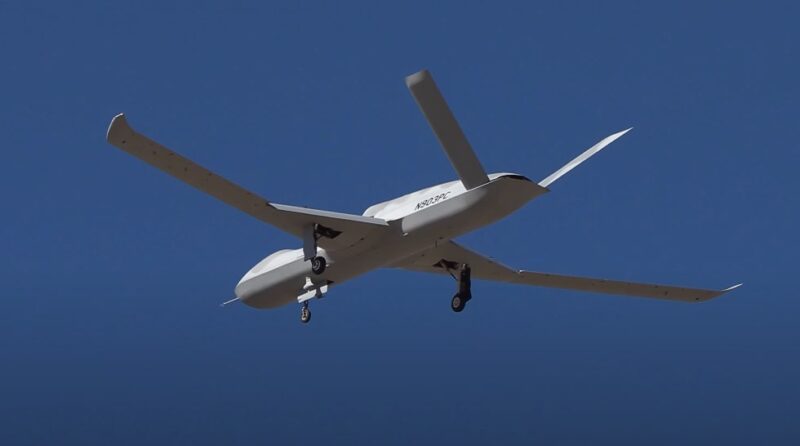
RQ-170 Sentinel
- Type: High-Altitude Long-Endurance (HALE) Unmanned Aerial System
- Designer Company: Lockheed Martin
- Payload Equipment: AESA radar, sensitive sensors, synthetic aperture radar, electronic warfare systems
- Dimensions:
- Length: 4.5 meters
- Wingspan: 20–26 meters
- Height: 1.84 meters
The RQ-170 Sentinel is an intelligence-focused UAV, capable of flying at altitudes up to 50,000 feet.
It is used for gathering critical information and conducting surveillance missions in contested areas, leveraging its high-altitude performance to avoid detection.
Designed for intelligence, surveillance, target acquisition, and reconnaissance (ISTAR) missions, this military drone can potentially carry an array of advanced sensors and radar systems.
The stealth jet engine allows high endurance and altitude, making the RQ-170 a crucial asset in modern electronic warfare and surveillance tasks.
Skydio X2D
- Flight Time: Up to 35 minutes
- Max Speed: 25 mph (40 km/h)
- Wind Resistance: 23 mph
- Weight: 1325 grams (with battery)
- Dimensions:
- Length: 66 cm (26.1”) unfolded; 30 cm (11.9”) folded (no battery)
- Width: 56 cm (22.4”) unfolded; 15 cm (5.5”) folded (no battery)
- Height: 20 cm (8.3”) unfolded; 10 cm (3.6”) folded (no battery)
- Max Service Ceiling: Up to 12,000 feet
- Operational Temperature Range: -10°C to 43°C
The Skydio X2D is designed for short-range reconnaissance missions, with a maximum altitude of 8,000 feet.
It is part of the U.S. Army’s Short Range Reconnaissance (SRR) program and is equipped with advanced AI tools for efficient scouting and data collection.
Skydio X2D is a military drone ideal for inspection and reconnaissance tasks without compromising the user’s safety.
As a Blue sUAS program drone, Skydio X2 meets the U.S. government’s domestic sourcing requirements, strengthening Skydio’s position in the defense sector.
B-21 Raider
- Contractor: Northrop Grumman (aircraft), Pratt & Whitney (engines).
- Production Plan: Projected to produce at least 100 units.
- Operator: AFMC with future operations by AFGSC.
- Primary Locations: Air Force Plant 42 (California), Edwards AFB (California, for testing), with planned bases at Ellsworth AFB (North Dakota), Whiteman AFB (Missouri), and Dyess AFB (Texas).
- Dimensions:
- Wingspan: Approximately 45.72 meters (150 feet).
- Height: Approximately 5.4 meters (18 feet.)
The B-21 Raider is a strategic bomber with a capability to exceed 18,000 feet. Although primarily designed for long-range bombing missions, its altitude capabilities enable it to evade enemy defenses and deliver payloads with precision.
Conceived as part of a broader “family of systems,” the B-21 is intended to work alongside ISR, C2, and electronic warfare systems for robust operational flexibility.
Leveraging digital design for rapid adjustments and an open-systems architecture, the B-21 supports ease of modernization, with initial deliveries targeted for the mid-2020s.
RQ-180
- Type: Reconnaissance Stealth UAV
- Country of Origin: United States
- Primary Function: Unmanned reconnaissance, designed for airspace penetration with advanced stealth capabilities.
- Design Features: Likely includes stealth-focused body shaping and coatings.
- Wingspan Estimate: Approximately 130 feet.
The RQ-180 is a long-range reconnaissance UAV capable of flying above 18,000 feet. It is designed for stealth and high-altitude operations, providing critical intelligence and surveillance over hostile territories.
Although the details of its capabilities remain classified, the RQ-180 is expected to execute missions with advanced detection avoidance through its design and materials.
Its successful adoption in 2015 marks a strategic advantage in surveillance technology, enhancing U.S. operational intelligence capabilities.
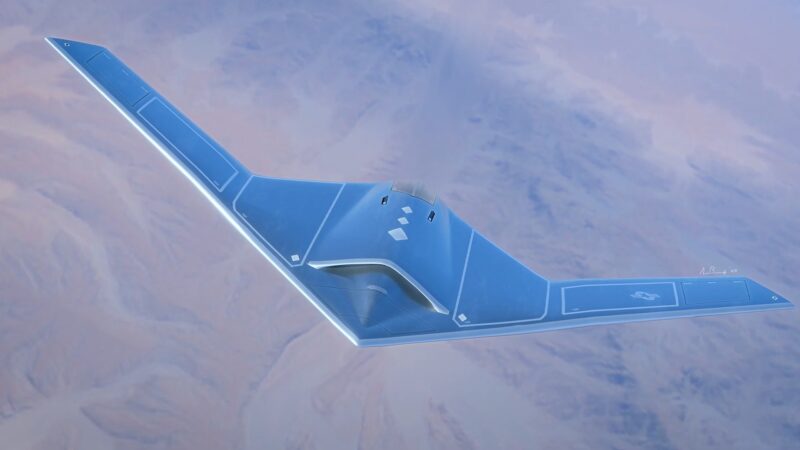
X-47B
- Primary User: United States Navy
- Powerplant: 1 × Pratt & Whitney F100-220U turbofan engine
- Armament: Equipped with two weapon bays, supporting up to 4,500 lb (2,000 kg) of ordnance
- Dimensions:
- Length: 11.63 m (38 ft 2)
- Wingspan: 18.9 m (62.1 ft) extended; 9.4 m (30.9 ft) folded
- Height: 3.10 m (10 ft 5)
- Avionics: Provisions for EO/IR, SAR, ISAR, GMTI, MMTI, and ESM
The X-47B is a combat demonstration UAV with a maximum altitude of 40,000 feet.
Used by the U.S. Navy, it showcases advanced technologies for autonomous flight and carrier-based operations, demonstrating the future potential of unmanned combat aircraft.
As a tailless, jet-powered vehicle with a blended-wing-body design, it is capable of semi-autonomous functions, including inflight refueling and carrier landings.
Both are crucial for extending operational range and compatibility with manned systems.
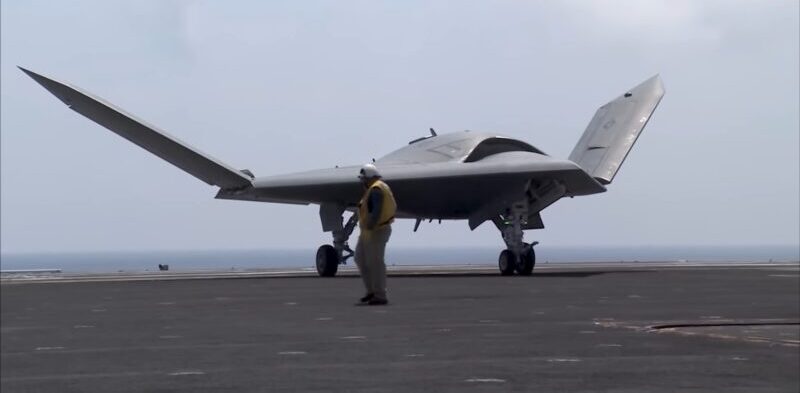
Factors Affecting Drone Altitude
Now let us address the factors that affect the military drone altitude.
| Factor | Description |
|---|---|
| Air Density | Higher altitudes have thinner air, reducing lift and requiring more power to maintain altitude. |
| Battery Life | Thinner air at high altitudes increases power use, limiting battery life and altitude range. |
| Propulsion Methods | Efficient engines and hybrid systems enable drones to reach higher altitudes by providing needed thrust in thin air. |
| Software Restrictions | A military drone often have altitude limits to prevent unauthorized entry into restricted airspace and ensure safety. |
| Weather Conditions | Extreme temperatures, high winds, and pressure changes affect altitude, reducing lift and stability. |
| Payload Weight | Heavier payloads reduce maximum altitude; lightweight materials help drones reach higher altitudes. |
| Autonomous Flight Systems | Advanced navigation systems help drones maintain stability and avoid obstacles, enhancing high-altitude performance. |
The Role of Technology in Altitude Performance
Now that we understand the factors, I would like to talk about how the technology can have a positive effect on the altitude performance.
Engine Power
Advancements in engine technology have greatly enhanced the performance and altitude capabilities of a military drone.
These advancements are driven by a combination of increased engine power, efficiency, and durability, allowing drones to operate effectively at higher altitudes and for extended periods.
Key features of modern drone engines include:
| Feature | Description |
|---|---|
| Increased Thrust | Enables drones to reach higher altitudes with reduced lift in thinner air. |
| Enhanced Efficiency | Maximizes fuel efficiency, allowing extended flight times. |
| Durability and Reliability | Built for longevity and consistent performance in harsh conditions. |
| Overcoming Altitude Challenges | Designed to maintain performance despite reduced lift at high altitudes. |
Lightweight Materials
The integration of lightweight, high-strength materials is pivotal in drone construction, especially for improving altitude capabilities.
Key materials and their benefits include:
| Material/Feature | Primary Benefit | Key Characteristics | Ideal Application |
|---|---|---|---|
| Carbon Fiber | Lightweight & Durable | Lightweight, high tensile strength | Agile, durable drones |
| Advanced Composites | Impact Resistance & Low Weight | Fiberglass, Kevlar, impact-resistant | Long-lasting, lightweight drones |
| Enhanced Altitude Performance | Higher Altitude & Efficiency | Reduced lift force, efficient battery | High-altitude, extended flight operations |
Aerodynamic Design
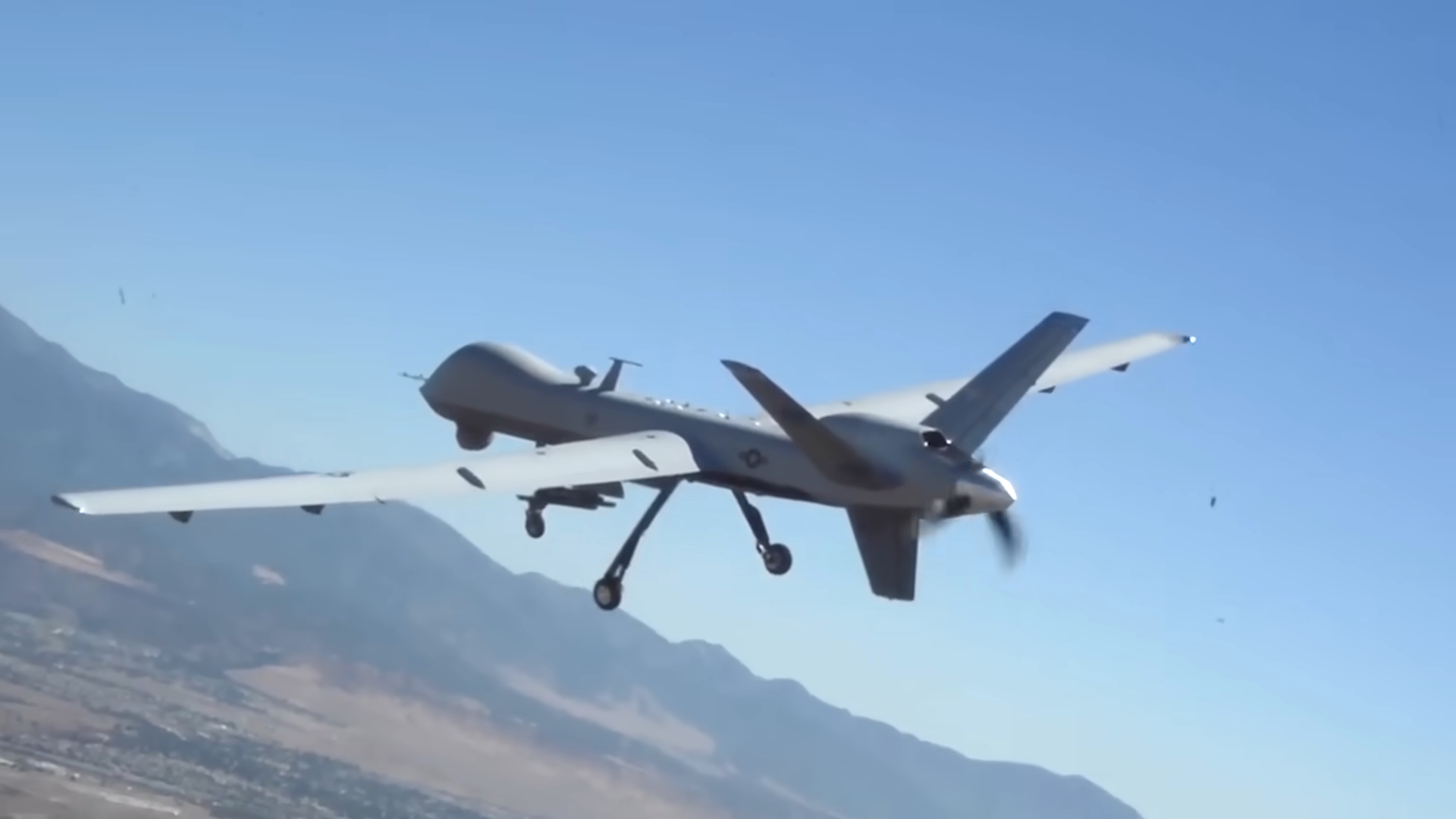
Aerodynamic design is essential for high-altitude flight, enabling drones to perform efficiently and remain stable in thin air at higher elevations.
- Streamlined Shapes:
- Reduces air resistance, allowing for smoother airflow around the drone’s body.
- Minimizes drag, which is crucial for conserving energy in low-density air.
- Optimized Wing Configurations:
- Enhances lift-to-drag ratios, crucial for maintaining altitude with minimal power.
- Wings are often elongated or shaped to maximize lift, aiding in energy efficiency.
- Stability and Efficiency at High Altitudes:
- Aerodynamic designs allow drones to adapt to lower air density, preventing loss of control.
- Streamlining and wing optimization help maintain steady flight, even in turbulent or thin-air conditions.
- Longer Flight Times and Higher Operational Ceilings:
- Advanced aerodynamics reduce fuel or battery consumption, extending mission duration.
- Enables drones to reach and sustain higher altitudes, broadening their range and operational capabilities.
By integrating these aerodynamic principles, drones can achieve stable and efficient high-altitude flight, maximizing their performance and endurance.
Autonomous Flight Systems
Modern military drones are equipped with sophisticated autonomous flight systems that are transforming the capabilities of unmanned aerial vehicles (UAVs) in complex and unpredictable environments.
These systems rely on a combination of advanced algorithms, high-tech sensors, and artificial intelligence to enable self-directed navigation and precision control.
- Advanced Navigation
- Autonomous flight systems use GPS, inertial measurement units (IMUs), and other navigation tools to chart precise flight paths.
- These systems constantly analyze data to adjust routes in real time, ensuring safe and efficient navigation across various terrains and altitudes.
- Obstacle Avoidance
- Equipped with LiDAR, radar, and optical sensors, drones can detect and avoid obstacles independently.
- Real-time object detection allows drones to react swiftly to unexpected threats or obstacles, essential for missions in unfamiliar or hostile areas.
- Optimal Flight Path Maintenance
- By continuously monitoring and adjusting their trajectory, autonomous systems maintain optimal flight paths to conserve fuel and extend mission duration.
- This path optimization ensures drones achieve their objectives with maximum efficiency and minimal resource usage.
- High-Altitude Autonomy
- At high altitudes, where human intervention may be limited due to communication delays or visibility constraints, autonomous systems are critical.
- These systems allow drones to operate independently and make critical decisions without relying on immediate human commands.
Satellite Communication Systems
High-altitude drones rely on satellite communication systems to maintain contact with ground control, ensuring operational stability and security across remote and expansive areas.
Satellite links provide consistent data flow between drones and control stations, which is essential for maintaining command and control at high altitudes where traditional communication methods may falter.
Operators receive and send data in real-time, allowing for immediate adjustments and responses. The responsiveness enables drones to perform complex missions, including surveillance and monitoring, without delays.
Systems implement robust encryption and security protocols to protect data, ensuring sensitive information is shielded from potential threats. The security feature is critical, particularly for military and governmental applications.
The communication systems support beyond line-of-sight (BLOS) operations, making it possible for drones to cover vast areas, well outside the range of ground-based systems.
Satellite communication enables drones to operate effectively in remote or hard-to-access regions, including oceanic, polar, or desert landscapes where terrestrial infrastructure is lacking.
Enhanced Power Systems
Innovations in power systems are revolutionizing military drone capabilities, with advancements in both hybrid engines and battery technology that significantly extend operational range and altitude.
These improvements enable drones to perform longer missions, support heavier payloads, and operate in more challenging environments.
Key advancements include:
| Feature | Description |
|---|---|
| Hybrid Power Systems | Combines fuel engine endurance with electric motor efficiency. |
| Allows switching between power sources for better fuel efficiency. | |
| Enables extended flight times, ideal for surveillance. | |
| Battery Technology Improvements | Lithium-ion and solid-state batteries improve power and reduce weight. |
| Increases altitude capacity, reaching heights beyond fuel-only engines. | |
| Quick recharge, storing energy efficiently for minimal downtime. | |
| Increased Payload Capacity | Supports heavier payloads without reducing flight duration. |
| Carries advanced equipment for versatile operations. |
Main Use and Advantages
Of course, there are numerous advantages of using a military drone, but let us touch upon the most important ones by different models:
| Application | Description | Altitude Capability |
|---|---|---|
| Surveillance and Reconnaissance | High-altitude drones like the RQ-4 Global Hawk provide real-time intelligence over vast areas. | Up to 60,000 feet |
| Combat Operations | Drones such as the MQ-9 Reaper and MQ-20 Avenger offer both surveillance and precision strike capabilities. | High-altitude performance |
| Border and Maritime Patrol | The MQ-4C Triton is used for border and maritime patrol. | Up to 56,000 feet |
| Intelligence Gathering | The RQ-170 Sentinel and similar drones gather intelligence on enemy positions and activities. | Up to 50,000 feet |
Continual Development
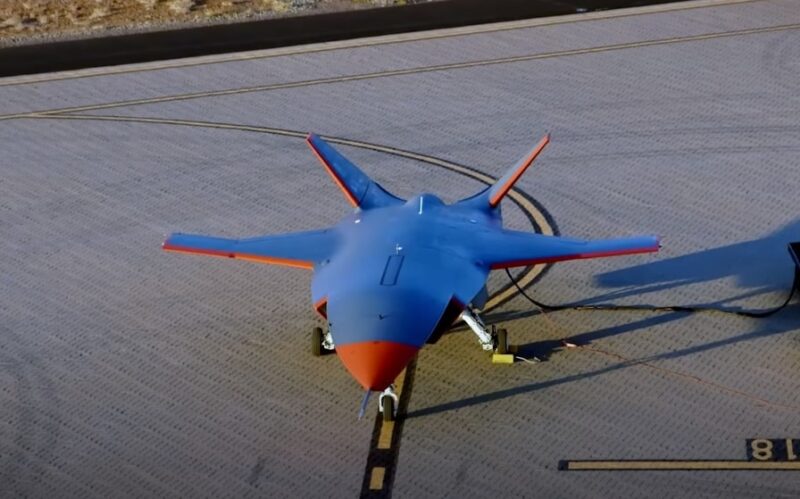
Hypersonic Engines
One of the most promising advancements in drone technology is the development of hypersonic engines.
These engines have the potential to enable drones to fly at speeds exceeding 6,000 miles per hour, significantly increasing their operational ceilings.
Hypersonic drones could revolutionize reconnaissance and surveillance missions by covering vast distances in a fraction of the time currently required.
Advanced Materials
Researchers are exploring new materials that could further reduce the weight of drones while increasing their structural integrity.
The use of nanomaterials and advanced composites could lead to drones that are both lighter and stronger, allowing them to reach higher altitudes and carry larger payloads without compromising performance.
Improved Battery Technology
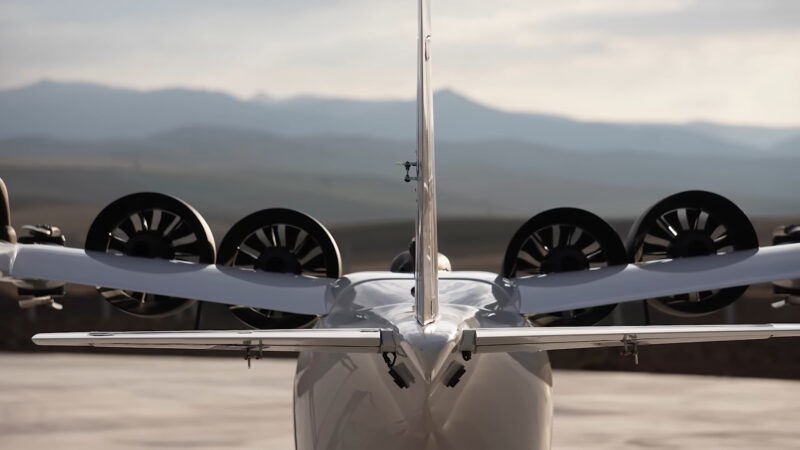
Battery technology is continuously evolving, with developments in energy density and efficiency.
Future drones could benefit from batteries that provide longer flight times and higher power output, enabling them to maintain high altitudes for extended periods.
This would enhance the endurance and operational range of a military drone, making it even more effective for long-duration missions.
Autonomous Flight and AI Integration
The integration of artificial intelligence (AI) and more advanced autonomous flight systems will play a crucial role in the future of military drones.
AI can optimize flight paths, manage energy consumption, and adapt to changing environmental conditions, ensuring that drones can operate at maximum efficiency.
These systems will allow drones to make real-time decisions, avoid obstacles, and maintain optimal altitude without human intervention.
Enhanced Sensor and Communication Systems
Future drones are expected to be equipped with even more sophisticated sensors and communication systems.
These enhancements will allow for better data collection, real-time analysis, and secure communication with ground control.
Advanced sensors can operate effectively at higher altitudes, providing clearer and more detailed imagery and intelligence.
Modular Design
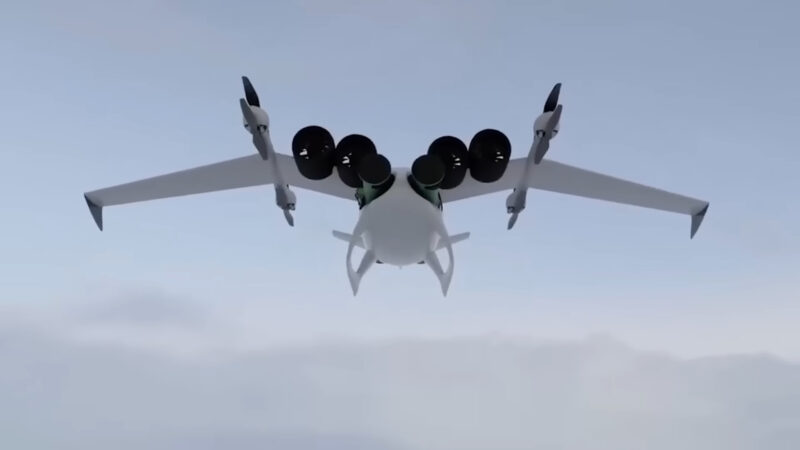
Modular drone designs will enable the quick adaptation of drones for various missions. By swapping out different components, such as sensors, engines, or communication systems, military drones can be tailored for specific tasks.
This flexibility will allow drones to achieve optimal performance at high altitudes for a wide range of applications.
Regulatory and Safety Enhancements
As drone technology advances, so too will the regulatory frameworks governing their use.
Enhanced safety protocols and more precise regulations will ensure that high-altitude drones can operate without posing risks to other aircraft.
These advancements will facilitate the safe integration of drones into national and international airspaces, enabling them to reach their full altitude potential.
FAQs
Summary
Almost every military drone possesses impressive altitude capabilities, with some models able to reach up to 60,000 feet or more. These high-altitude drones play crucial roles in surveillance, reconnaissance, combat operations, and other strategic missions.
Factors such as air density, battery life, propulsion methods, and advanced technology significantly influence their altitude performance. As technology continues to evolve, future drones are expected to achieve even greater heights and capabilities, enhancing their effectiveness in various military applications.
The continued innovation in materials, engines, and autonomous systems will further expand the operational scope and strategic advantages of a military drone.
Also Read: What are the laws of drone flying in some states? Check them out before getting yourself in a problem.

